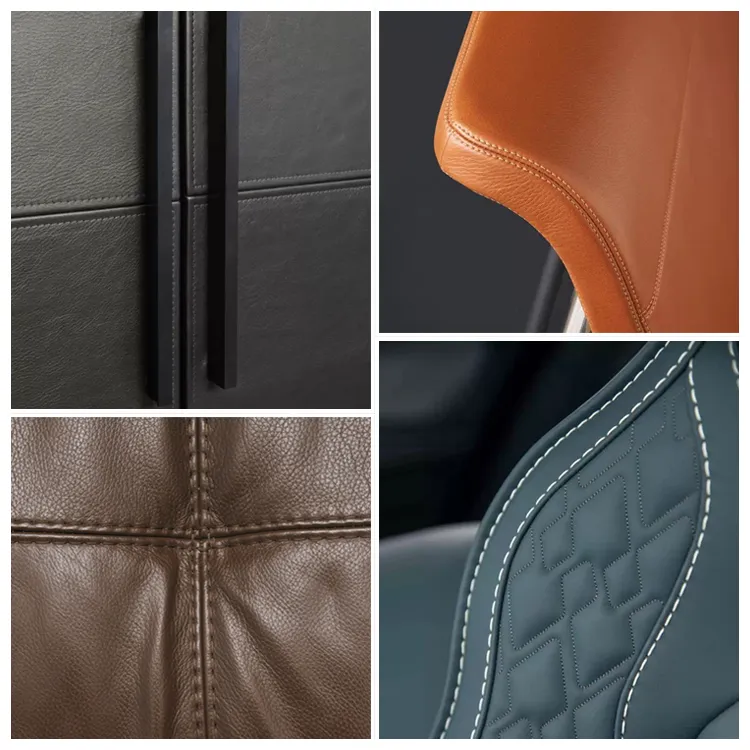Advanced Automated Sewing Machines for Industrial Applications and Efficient Production Solutions
The Rise of Automated Industrial Sewing Machines
In the modern manufacturing landscape, the advent of automated industrial sewing machines marks a significant technological leap, transforming the way textiles and garments are produced. In an industry where precision, speed, and efficiency are paramount, these advanced machines play a crucial role in meeting the demands of the fast-paced fashion and textile markets.
Understanding Automated Industrial Sewing Machines
Automated industrial sewing machines are sophisticated devices that utilize robotics and computer technology to execute sewing tasks with minimal human intervention. These machines can perform a wide range of functions, including stitching, hemming, and embroidery, at speeds unattainable by manual labor. Equipped with sensors and artificial intelligence, they can adjust their operations in real-time, ensuring high-quality output while minimizing material waste.
Key Benefits
1. Increased Efficiency One of the most significant advantages of automated sewing machines is their ability to operate continuously without fatigue. They can run for extended periods, producing garments at a much faster pace compared to traditional methods. This efficiency not only boosts production rates but also helps manufacturers meet tight deadlines, essential in the fast-fashion world.
2. Precision and Consistency Automated machines excel in delivering uniformity and accuracy in stitching. The use of computer-guided technology ensures that each seam is consistent, which is paramount in high-volume production. This level of precision reduces defects and the likelihood of rework, leading to significant cost savings for manufacturers.
3. Labor Cost Reduction By integrating automation into the sewing process, companies can significantly reduce labor costs. Although the initial investment in automated machinery can be substantial, the long-term savings make it a viable option. As the skill level required for operating these machines is lower than traditional sewing techniques, it also allows manufacturers to hire less skilled labor at a reduced cost.
4. Enhanced Flexibility Modern automated sewing machines are designed to adapt to various patterns and garment styles, allowing manufacturers to switch between different products with ease. This flexibility is critical in today’s market, where consumer preferences can change rapidly, and businesses must respond quickly to stay competitive.
automated industrial sewing machine

Challenges to Overcome
Despite the numerous benefits, the transition to automated industrial sewing machines does face challenges. One significant issue is the initial investment required to purchase and install these machines. For smaller manufacturers, this can be a barrier to entry. Furthermore, there is a learning curve associated with operating these advanced systems, necessitating training for employees, which adds to the initial costs.
Another challenge is maintaining a balance between automation and the human touch. While automated machines can handle most sewing tasks, there are certain aspects of garment production, such as intricate hand-finishing and quality control, where skilled labor remains irreplaceable. Finding the right balance between automation and skilled labor is vital for maintaining high-quality output.
The Future of Automated Industrial Sewing Machines
Looking ahead, the future of automated industrial sewing machines appears promising. As technology continues to advance, we can expect to see even more sophisticated machines capable of performing complex tasks autonomously. The incorporation of machine learning and data analytics will likely result in smarter machines that optimize production processes further and enhance overall operational efficiency.
Sustainability is also becoming increasingly important in the textile industry, and automated machines can contribute to this goal by minimizing waste and energy consumption. With the growing demand for sustainable practices, manufacturers leveraging automation will likely gain a competitive edge in the market.
Conclusion
In conclusion, automated industrial sewing machines are revolutionizing the textile and garment manufacturing sectors. Their ability to increase efficiency, precision, and adaptability while reducing labor costs makes them an attractive solution for manufacturers striving to stay ahead in a highly competitive market. While challenges remain, the continued evolution of this technology promises a bright future for the industry, paving the way for more innovative and sustainable production practices. As businesses embrace automation, the landscape of garment manufacturing will undoubtedly continue to evolve, making it an exciting time for industry stakeholders.
-
Industrial Cylinder Arm Sewing Machine: Revolutionizing Heavy-Duty SewingNewsJul.28,2025
-
Cylinder Arm Sewing Machine: Perfect for Special Sewing ApplicationsNewsJul.28,2025
-
Cylinder Bed Sewing Machine: Essential for Sewing Complex MaterialsNewsJul.28,2025
-
Heavy Duty Sewing Machine: The Essential Tool for Industrial ApplicationsNewsJul.28,2025
-
Computerized Pattern Sewing Machine: Revolutionizing Precision StitchingNewsJul.28,2025
-
Heavy Duty Industrial Sewing Machine: Power Meets PrecisionNewsJul.28,2025
-
Leather Sewing Machine: The Industrial Standard for Tough MaterialsNewsJul.18,2025





























